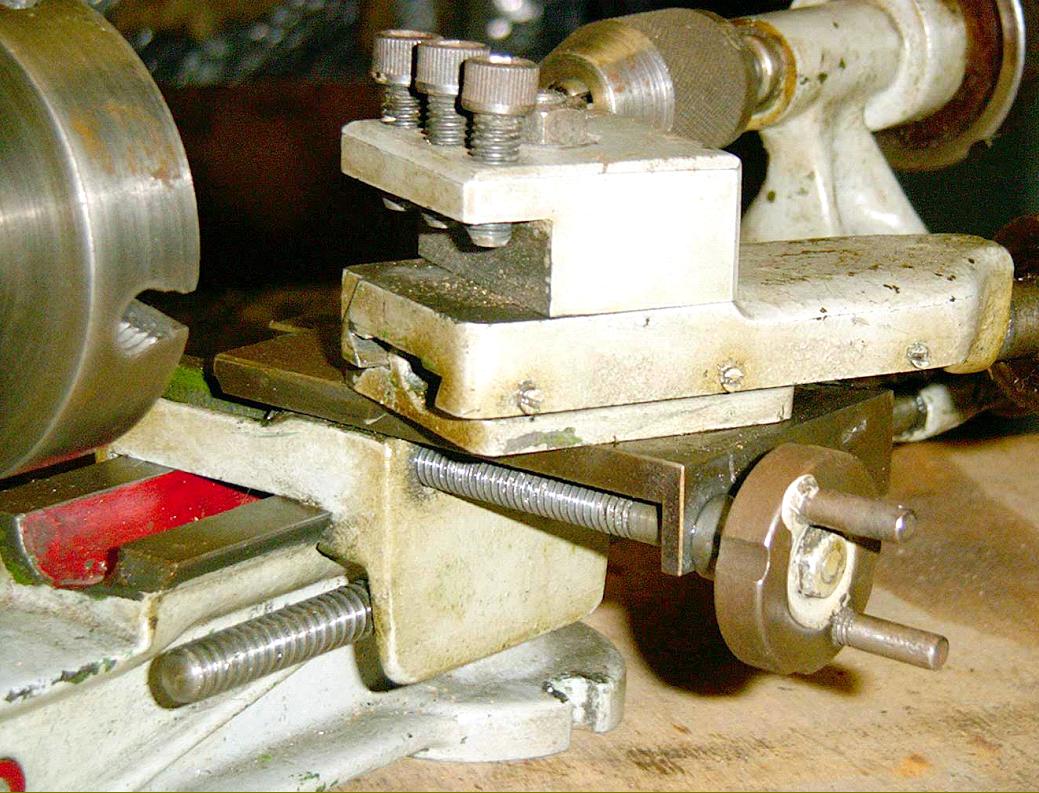|
|
|
|
|
|
E-MAIL Tony@lathes.co.uk
Home Machine Tool Archive Machine Tools For Sale & Wanted
Machine Tool Manuals Machine Tool Catalogues Belts
Wizard & Lane Micro Lathe
A simple, 3-speed gap-bed lathe - distinguished by the use of unusual rounded mounting feet - the little "Wizard" 1.75" x 6.5" was advertised from 1946 until the early 1950s as both the Wizard and Lane Micro-Lathe. The makers described it as the Lathe for the Discriminating Amateur - but even this did not stop the company eventually disappearing without trace as competition stiffened with the likes of Flexispeed, Perris, Jason, Cowells, Wakefield and Haighton all touting for business. The makers, C. Lane & Son, had an office in Dairy Lane, Houghton-le-Spring, County Durham with their factory based (economically) in an old police station in nearby William Street. Unfortunately, they had neglected to check on the provenance of the "Wizard" name, and had to abandon its use, even to a note appearing to this effect in the Model Engineer magazine. After this the bed casting was altered to remove the rather artistic red "Wizard" lettering, and a riveted-on "Lane Micro Lathe" nameplate used instead.
Designed along very similar lines to the Sheffield-made Adept and Super Adept machines the Wizard had, unusually for so small a machine, a proper compound slide rest fitted as standard - though it lacked micrometer dials on the feed screws. Whilst early machines might have had a cross slide and end plate cast as one all machines so far found have had a conventional detachable plate secured by two screws. The cross slide ways were unusual and, like those on the Harrison 17-inch, were "inverted" into the top of the saddle with the gib-strip adjustment screws passing through the right-hand wall of the casting.
Bored through 9/32", the spindle carried a cast-iron 3-step pulley designed to be driven by a round leather "gut" drive; the overhung leadscrew, which ran through a solid nut on the apron, had a proper Acme thread and the cross slide carried a single front-to-back T slot.
No. O Morse taper centres were used in headstock and tailstock, a heavy 4" faceplate was supplied to run in the 4.5" capacity gap and the tailstock was advertised as being capable of set-over for taper turning - although the example shown below does not enjoy this facility. It may be that the lathe underwent some development for the tailstock casting shown in the advertisement at the foot of the page is distinctly different to that in the photographs. The makers were proud of the lathe's performance, claiming in one advertisement that it was capable of reducing a 3/4" diameter steel bar to 1/2" "…..in one cut, genuine repeatable performance.
Although no documentary evidence exists to support the contention, is likely that the optional countershaft was available in two version: one, a basic plain unit that bolted to the bench without any form of belt adjustment and another, shown below, that used the same vertical bench unit but mounted in a heavy cast-iron bracket and fitted with an over-centre tensioning lever. Also offered was a cast-iron tray that, like the one fitted to the Haighton Cadet, made a significant difference to the stiffness of the whole assembly; however, as only one has ever been discovered, few can have been sold.
Unlike many maker's of small lathes Lane & Son were not afraid to cast a brand name into the bed and details of their address on a transfer affixed to the saddle front. Although both "Wizard" and "Lane Micro Lathe" tags were used, there is also the possibility (common to makers of such machines) that numbers might have been supplied to dealers and distributors for sale using different branding.
Described as the Portable Home Workshop the lathe was advertised during 1953 (in what must have been one of the last acts of publicity) complete with a neat countershaft, motor and switch all screwed to a heavy base board. The lathe could be had for £10 : 3s : 2d., the countershaft £2 : 4s : 0d. a 0.25 h.p. 1-phase motor £5 : 0s : 0d. and a 2.25-inch diameter 4-jaw independent chuck £1 : 18s : 6d.
The maker's motto was: "The little Lathe that is a little different"..
|
|
|
|





















